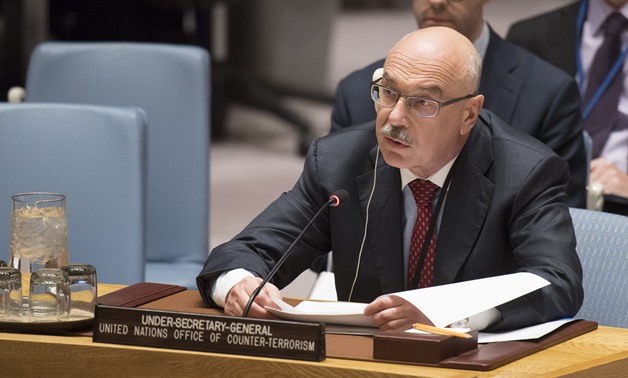Special to WorldTribune.com
UNITED NATIONS — Despite dramatic territorial losses, stunning military setbacks and dwindling numbers of militants, the so called Islamic state of Iraq also know as (ISIL)
has been degraded but still remains a “global threat,” according to a new UN report.
In a candid briefing to the Security Council, Vladimir Voronkov, chief of the UN Office of Counter-Terrorism warned that despite military losses, “ISIL has transformed into a covert network, including in Iraq and the Syrian Arab Republic, it remains a threat as a global organization with centralized leadership. This threat is increased by returning, relocating or released foreign terrorist fighters.”

Prior to its military defeat by the United States and Arab coalition forces, the UN Report states that while ISIL’s center of gravity was in Iraq and Syria there remain up to 18,000 fighters, including at least 3,000 foreign militants.
The Report warns that “foreign terrorist fighters leaving the conflict zone, or prior returnees becoming active again on release from prison or for other reasons, will increase the threat. The handling of dependents is particularly challenging. Radicalized women and traumatized minors may also pose a serious threat.”
In other words radicalized militants fleeing Syria and returning to North Africa and Western Europe pose a particular security challenge. Indeed “returned” terrorists from the Middle East have already perpetrated attacks inside Europe in the past few years.
Equally according to Voronkov, despite loss of revenue from its territorial setbacks, ISIL holds cash and investments ranging from $50 to $300 million, thus offering the terrorist organization deep pockets to pursue mayhem on a global scale.
Ironically ISIL’s loss of having to defend formal territory, its once vaunted Caliphate, allows them a tactical flexibility to pursue a wider range of disparate targets on a wider scale.
ISIL or Da’esh, as it is derisively known in the Arab world, once posed a fearful threat to Iraq and Syria; during the height of its Caliphate in 2015 and 2016, the group controlled territory as large as the United Kingdom. But after punishing counter-attacks by the USA and an Arab coalition on its strongholds in Mosul and Raqqa, ISIL’s territory has dramatically shrunk to the point of extinction.
Yet, the UN Report cautions, “The fall in international attacks and plots has also been caused by attrition of key ISIL personnel. Damage to the ISIL brand may be another way in which its progressive military defeat has reduced its capacity to project an international threat.”
The document adds, “Nevertheless, ISIL remains by far the most ambitious international terrorist group, and the one most likely to conduct a large-scale, complex attack in the near future.”
First and foremost, still significant ISIL remnants threaten both Iraq and Syria, the epicenter of the conflict. As ISIL is a Sunni Islamic radical group, these terrorist remnants can activate in wide parts of the Middle East. Though serious military losses have forced ISIL to relinquish the idea of ruling a geographical “caliphate” for now, the group retains that long-term aspiration and continues to proclaim it online. ISIL is reported still to control between 14,000 and 18,000 militants in Iraq and Syria.
Secondly, the threat has metastasized since its formal defeat; in other words it may reform and regroup in other regional trouble spots where there is the usual mix of instability, chaos, and lack of effective government. Libya comes to mind as a prime candidate, as a country largely forsaken and overlooked by the West.
Third, Foreign fighters returning to Western Europe, especially those from Belgium, Britain, France and Germany pose a clear and present security risk. Terrorist attacks from such well trained and motivated elements are probable. Enhanced border controls in Europe remain paramount.
The horrific November 2015 terror attacks in Paris killing 130 civilians were carried out by ISIL.
A report by the Netherlands National Coordinator for Security estimates that between 3,900 and 4,300 foreign fighters from EU member states went to fight in Syria and that “around 30 percent” have since returned to their home countries.
Finally while ISIL is largely defeated, the U.S. should retain a “flexible insurance policy” of Special Forces to counterbalance any possible comeback. Working with local Arab allies, U.S. troops serve as force multipliers in a region where a formal American military footprint is not wise but where the deterrence of Washington’s military might remains crucial.
Though President Trump has chosen to downsize an already small contingent of U.S. forces in Syria, it’s wise to retain a flexible security commitment to the volatile region.
John J. Metzler is a United Nations correspondent covering diplomatic and defense issues. He is the author of Divided Dynamism the Diplomacy of Separated Nations: Germany, Korea, China (2014). [See pre-2011 Archives]

 By
By